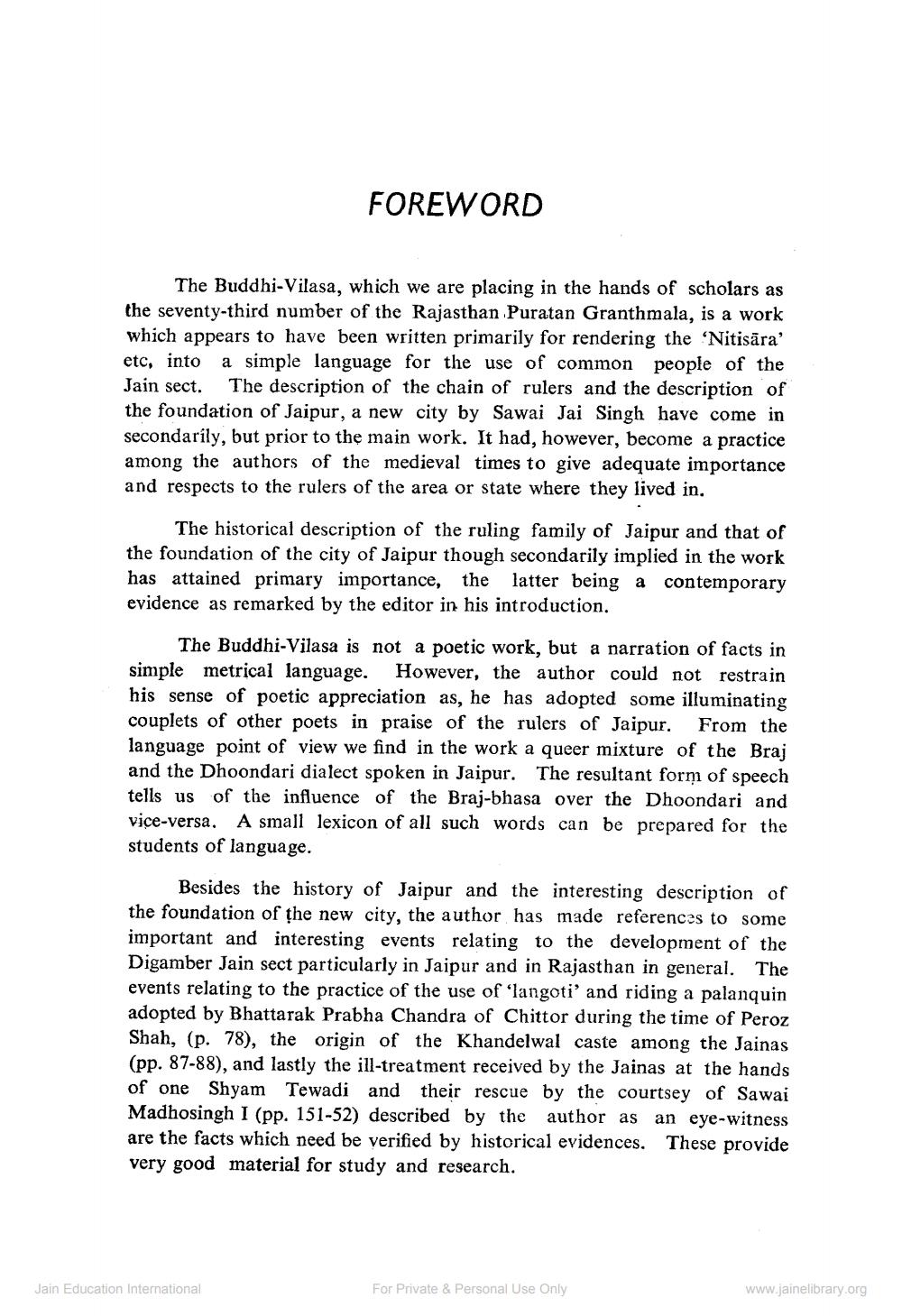________________
FOREWORD
The Buddhi-Vilasa, which we are placing in the hands of scholars as the seventy-third number of the Rajasthan Puratan Granthmala, is a work which appears to have been written primarily for rendering the 'Nitisāra' etc, into a simple language for the use of common people of the Jain sect. The description of the chain of rulers and the description of the foundation of Jaipur, a new city by Sawai Jai Singh have come in secondarily, but prior to the main work. It had, however, become a practice among the authors of the medieval times to give adequate importance and respects to the rulers of the area or state where they lived in.
The historical description of the ruling family of Jaipur and that of the foundation of the city of Jaipur though secondarily implied in the work has attained primary importance, the latter being a contemporary evidence as remarked by the editor in his introduction.
The Buddhi-Vilasa is not a poetic work, but a narration of facts in simple metrical language. However, the author could not restrain his sense of poetic appreciation as, he has adopted some illuminating couplets of other poets in praise of the rulers of Jaipur. From the language point of view we find in the work a queer mixture of the Braj and the Dhoondari dialect spoken in Jaipur. The resultant form of speech tells us of the influence of the Braj-bhasa over the Dhoondari and vice-versa. A small lexicon of all such words can be prepared for the students of language.
Besides the history of Jaipur and the interesting description of the foundation of the new city, the author has made references to some important and interesting events relating to the development of the Digamber Jain sect particularly in Jaipur and in Rajasthan in general. The events relating to the practice of the use of langoti' and riding a palanquin adopted by Bhattarak Prabha Chandra of Chittor during the time of Peroz Shah, (p. 78), the origin of the Khandelwal caste among the Jainas (pp. 87-88), and lastly the ill-treatment received by the Jainas at the hands of one Shyam Tewadi and their rescue by the courtsey of Sawai Madhosingh I (pp. 151-52) described by the author as an eye-witness are the facts which need be verified by historical evidences. These provide very good material for study and research.
Jain Education International
For Private & Personal Use Only
www.jainelibrary.org




